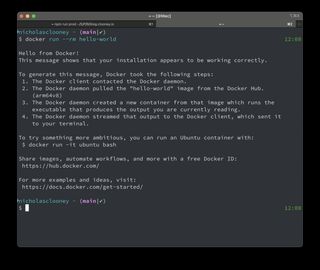Running Docker on macOS Without Docker Desktop: My Journey With Colima
Like a lot of developers coming from Linux or a server environment, I hit some confusion when setting up Docker on my Mac. On Linux, you just install Docker and it works natively. On macOS, it’s a bit different — there’s no native Docker Engine because we don’t have a Linux kernel. That’s where tools like Docker Desktop and Colima come in.
Let me walk through what I’ve learned.
Installing Docker: CLI vs. Docker Desktop
When you run:
brew install docker
you only get the Docker CLI (docker command). This by itself can’t run containers locally, because there’s no Docker Engine running on macOS. It’s only useful if you’re connecting to a remote Docker host.
By contrast, if you run:
brew install --cask docker
you install Docker Desktop, which includes:
- A Linux VM under the hood
- Docker Engine inside that VM
- Docker CLI
- Docker Compose
- A nice GUI for managing containers
This works locally, but it’s heavier on system resources and has licensing limitations for larger organizations.
Colima: A Lighter Alternative
Instead of Docker Desktop, I installed Colima:
brew install colima docker
Here’s what happens:
docker(CLI) lets me run commands.colimalaunches a lightweight Linux VM behind the scenes.- That VM runs the Docker Engine.
- The CLI is automatically wired to talk to Colima.
So effectively, I get the same functionality as Docker Desktop, but with:
- Less CPU/memory overhead
- Open-source tooling
- No licensing restrictions
- CLI-first workflow
Verifying That Docker Works
Once Colima is started with colima start, I can test my setup with a few commands:
docker info
Shows details about the engine — if this works, Docker is live.
docker run --rm hello-world

Runs a test container and removes it immediately when finished (--rm flag).
docker run -d -p 8080:80 nginx
Starts an Nginx container in the background. Visiting http://localhost:8080 shows the welcome page.
docker ps
Lists running containers.
Managing Disk Usage
Docker pulls in images, and they take up space. To see what’s on disk:
docker images
Lists all images.
docker system df
Shows how much disk space images, containers, and volumes are using.
du -h -d 1 ~/.colima
Shows how big the Colima VM disk is on my Mac.
To clean up unused stuff:
docker system prune -a
Key Takeaways
brew install dockerinstalls only the CLI — not enough to run containers locally.- Docker Desktop is full-featured but heavy.
- Colima + docker CLI is a lightweight alternative for running containers on macOS.
- Always check
docker system dfand~/.colimato keep disk usage under control. - The
--rmflag is handy for temporary containers that don’t need to persist.
👉 With this setup, I now have Docker running smoothly on macOS without needing Docker Desktop. It feels more minimal, transparent, and under my control.